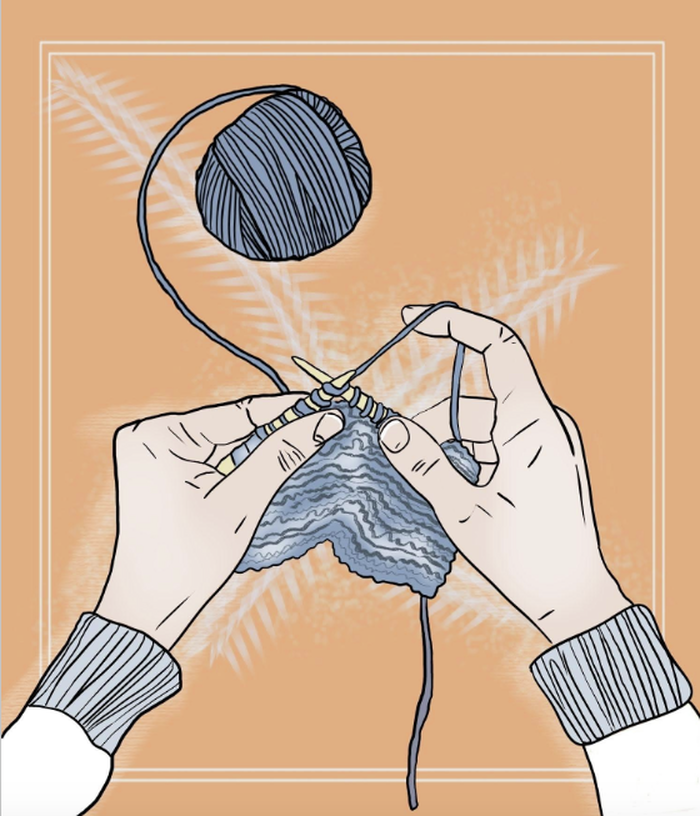The radical sincerity of Bode
In this striking review, Fashion Columnist Anna Chan delves into the effortless creative purity of the menswear brand Bode and the novelty of its founder’s approach to art
Emily Dickinson once wrote that “Nature is a Haunted House - but Art - a House that tries to be haunted”. Art is inherently mimicry, an attempt at visual and visceral reproduction (whether it aims to reproduce an object, concept or feeling). It cannot shake off cognisance of its mimicry. Fashion, one form of art, certainly exemplifies this, and in its self-consciousness attempts instead to draw a caricature by making this metaphorical house ‘Fashion’ with a capital ‘F’.
Think Karl Lagerfeld’s collection for Chanel Fall 2014. The collection was presented with models walking through mimicked supermarket aisles in the Chanel Shopping Centre; an item ‘on sale’, the sac poubelle (garbage bag) was wittily recast as a sac plus belle (more beautiful bag), and the shopping baskets held by the models were covered in the same leather treatment as their luxury bag straps. And don’t forget the rows of audiences surrounded by temporary walls of the ‘supermarket’ set inside the Grand Palais. Despite this meticulous mimicry, the glossy veneer of fashion is omnipresent: the house is trying to be haunted.
Of course, it knows that it is attempting mimicry. The ‘Chanel-ifying’, and choice of the concept of a supermarket, were deliberate plays on modern consumerism through an art form and luxury brand itself operating through consumerism (its revenue in 2019 was over $12 billion). Not levelling a critique but merely demonstrating ironic self-awareness, these collections read more like a postmodernist, capitalist (but beautiful) hell.
In contrast, the menswear brand Bode (pronounced BOH-dee) is one which manages to balance the ‘Art’ and ‘Nature’. It does not try to fashionably mimic nor attempt ironic commentary. It is sincere without trying to be sincere, and its values shine through in its operation, not through high-concept commentary. This is the most radical form fashion could take today.
Bode was founded by Emily Adams Bode in 2016, has dressed the likes of Harry Styles, Michelle Obama and Jeremy O’Harris, and last year, coincidentally, won the Karl Lagerfeld Award for Innovation. Bode’s fabrics are mostly vintage textiles - many requiring mending - from old clothing, tablecloths and quilts. Famed for their patchwork and antique textiles, Bode’s garments still manage to be modern through simple silhouettes and tailoring. Earlier this year, they opened the Bode Tailor Shop, co-opting a neighbourhood coffee shop about to close whilst creating a new space which offers bespoke tailoring and repairs to their customers. This emphasis on textile, craft, history and provenance can be also seen in their descriptions of their pieces.
"This is the most radical form fashion could take today."
These values are at the core of Bode, arguably returning fashion to its ‘Nature’ of craft whilst making precious the nature of these textiles, rather than appreciating the textile when shaped into a concept. Through patchwork shirts and pom-pommed jackets, Bode has built an unprecedented and quietly radical system of production, with a chain of fashion mills handling the constant yet low supply of vintage fabrics, and mending, hand-embroidering and tailoring them. By making precious each textile and their provenance, the brand does not comment on consumerism solely through concept, but instead enacts something radical.
The brand’s latest collection and installation are titled ‘A Year Off’. Taking inspiration from her father’s year off from college to travel in 1969, Bode contrasts this with the very different year off everyone has had due to the pandemic. The installation is a literal room (not a set built to mimic a room) with peeling walls, curtains of pinned fabrics, unmade beds, a desk with scattered papers and a chair looking like someone was just sitting there. It is a room littered with the remnants of movement - a backpack slung on the edge of the bed, shoes stepped out of in a rush, clothes thrown off to get others on. Space and time merge and are captured in the installation, invoking both her father’s year of travel and our year of physical stagnation and confinement in our rooms. A ghost of the outside world and a ghost of our pre-COVID selves leave their marks within the four walls; the only world we knew for months.
The installation, of course, is ultimately ‘Art’ and mimicry: clothing is displayed in deliberate creations of mise-en-scene as part of her concept of merging personal history and collective experience, movement and confinement. ‘Concept’ is what makes Bode fashion, and not clothing. But what makes it radical is its tactility, materiality and sincerity. Clothing is presented not on mannequins as bearers of concept and irony, but in its nature as artefacts of lived and worn experience. Each textile’s antiquity and each garment’s provenance makes genuine the conceptual use of history.
What Emily Dickinson meant by “Nature” was inherence of form, an innate trueness. Bode embodies this in its value for the textile - the garment at its core. Yet, it never loses the fantasy of fashion, exploring concepts of personal history and anchoring it in a reflection on collective contemporary experience. Her collections do not merely have the aesthetic and concept of historicity or commentary on modern consumerism, but genuinely embody them in its innate material form, throughout the garment’s entire life cycle from material sourcing to production and repairs. Bode creates ‘Art’ through ‘Nature’.
Thus, with sincerity, with historicity, and with purpose yet not with didacticism, Bode sets fashion on a radical course. It subverts the irony, conceptuality, consumerism and glossiness of mainstream fashion by just doing.
 Features / How sweet is the en-suite deal?13 January 2026
Features / How sweet is the en-suite deal?13 January 2026 Comment / Will the town and gown divide ever truly be resolved?12 January 2026
Comment / Will the town and gown divide ever truly be resolved?12 January 2026 News / 20 vet organisations sign letter backing Cam vet course13 January 2026
News / 20 vet organisations sign letter backing Cam vet course13 January 2026 Arts / Fact-checking R.F. Kuang’s Katabasis13 January 2026
Arts / Fact-checking R.F. Kuang’s Katabasis13 January 2026 Music / Inside Radiohead’s circle13 January 2026
Music / Inside Radiohead’s circle13 January 2026










